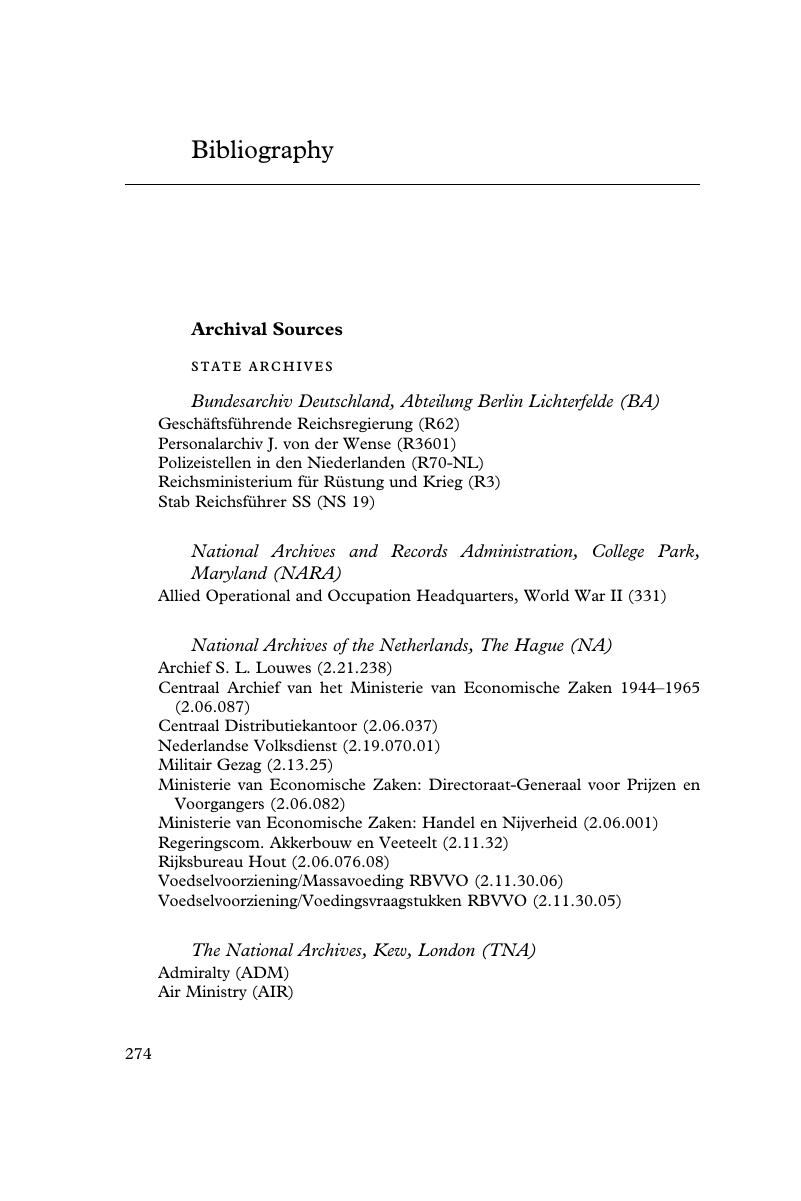Book contents
- The Hunger Winter
- Studies in the Social and Cultural History of Modern Warfare
- The Hunger Winter
- Copyright page
- Dedication
- Contents
- Illustrations
- Figures
- Maps
- Tables
- Acknowledgements
- Abbreviations
- Maps
- Introduction
- 1 Historical Contexts
- 2 Causes of the Famine
- 3 Effects on Mortality, Fertility, and Health in Later Life
- 4 Central Government and Food Administration
- 5 The Politics and Practices of Allied Relief
- 6 Coping at Household and Individual Levels
- 7 Community Strategies
- 8 The Evacuation of Children
- Conclusion
- Appendix: Timeline of Important Events
- Bibliography
- Index
- References
Bibliography
Published online by Cambridge University Press: 04 July 2020
- The Hunger Winter
- Studies in the Social and Cultural History of Modern Warfare
- The Hunger Winter
- Copyright page
- Dedication
- Contents
- Illustrations
- Figures
- Maps
- Tables
- Acknowledgements
- Abbreviations
- Maps
- Introduction
- 1 Historical Contexts
- 2 Causes of the Famine
- 3 Effects on Mortality, Fertility, and Health in Later Life
- 4 Central Government and Food Administration
- 5 The Politics and Practices of Allied Relief
- 6 Coping at Household and Individual Levels
- 7 Community Strategies
- 8 The Evacuation of Children
- Conclusion
- Appendix: Timeline of Important Events
- Bibliography
- Index
- References
Summary

- Type
- Chapter
- Information
- The Hunger WinterFighting Famine in the Occupied Netherlands, 1944–1945, pp. 274 - 300Publisher: Cambridge University PressPrint publication year: 2020

